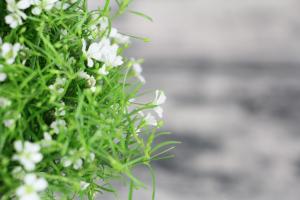How Much Space for Planting Tomatoes
Tomatoes are one of the most common vegetables grown in home gardens, and for good reason. With the right care and attention, tomatoes can produce bountiful, delicious fruit throughout the growing season. One of the most important factors in growing healthy, productive tomato plants is giving them enough space to grow. But just how much space do tomato plants really need?
Spacing for Indeterminate Tomato Varieties
Indeterminate tomato plants, also known as vining tomatoes, are the most common types used for home gardens. These plants can grow up to 10 feet tall or more, and require ample space to spread out and develop properly. When planting indeterminate tomatoes, it's important to provide each plant with at least 3 to 4 feet of space in all directions. This means that if you plan to plant several indeterminate tomato plants in the same bed, you'll need to space them at least 3 to 4 feet apart from each other.
Spacing for Determinate Tomato Varieties
Determinate tomato plants, also known as bush tomatoes, are smaller and more compact than indeterminate varieties. They typically grow to a height of 3 to 4 feet and produce most of their fruit within a shorter period of time. When planting determinate tomatoes, you'll still need to provide each plant with adequate space to develop properly. However, because these plants are smaller, you can space them a bit closer together. Aim for a spacing of about 2 to 3 feet between each determinate tomato plant.
Additional Considerations for Tomato Plant Spacing
When determining how much space to give your tomato plants, there are a few additional factors to keep in mind. First, consider the size of the containers or beds they'll be growing in. If you're planting tomatoes in containers, make sure the pots are large enough to accommodate the full size of the plant. For in-ground beds, you'll need to factor in the size of each plant's root system as well.
In addition to physical space, tomato plants also need adequate room for air circulation and sunlight. Proper spacing can help prevent disease and reduce the risk of sunscald or fruit damage. Finally, be sure to provide your tomato plants with the right nutrients and water to help them grow strong and healthy.
Conclusion
In conclusion, spacing is an important consideration when growing tomatoes in a home garden. Aim for a spacing of 3 to 4 feet between indeterminate varieties and 2 to 3 feet for determinate varieties. Make sure your containers or beds are adequately sized, and give your plants plenty of room for air circulation and sunlight. With the right care and attention, your tomato plants will thrive and produce delicious fruit throughout the growing season.

 how many times do yo...
how many times do yo... how many planted tre...
how many planted tre... how many pine trees ...
how many pine trees ... how many pecan trees...
how many pecan trees... how many plants comp...
how many plants comp... how many plants can ...
how many plants can ... how many plants and ...
how many plants and ... how many pepper plan...
how many pepper plan...































